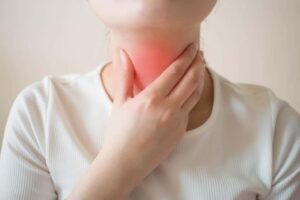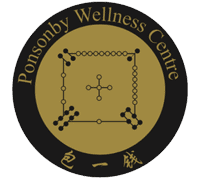Acupuncture Stops Coughing

Researchers find acupuncture effective for the alleviation of chronic coughing. In a controlled clinical investigation, researchers determined that a combination of electroacupuncture and herbal medicine nasal irrigation produces significant positive patient outcome rates for patients with upper airway cough syndrome (previously termed postnasal drip syndrome). The application of electroacupuncture plus herbal medicine nasal irrigation significantly outperformed the use of either modality as a standalone procedure. Based on the results of the investigation, Heilongjiang Traditional Chinese Medicine University researchers determined that the combination of electroacupuncture plus herbal medicine nasal irrigation produces a 94.5% total effective rate (Bao et al.).
Read here about acupuncture treatment for cough
The American College of Chest Physicians (ACCP) currently defines upper airway cough syndrome (UACS) as the more current way to refer to postnasal drip syndrome (PNDS). UACS is defined by the ACCP as critical pathogenesis involved in chronic coughing. Causes of UACS are several, including upper respiratory disorders (nasal and sinus diseases), anatomical abnormalities, chemically induced rhinitis, neural hypersensitivity, and inflammatory diseases of the larynx and pharynx. The term UACS is an umbrella diagnosis for chronic coughing resulting from these etiologies.
Bao et al. determined that herbal medicine nasal irrigation produces a 73.7% total effective rate. Electroacupuncture produces an 84.2% total effective rate. However, a combination of the two therapies produces a 94.7% total effective rate for the alleviation of chronic coughing.
Today, we take a look at how the researchers achieved the results. We’ll look at the acupuncture points proven effective for the alleviation of chronic coughing and the herbal medicine too. First, let’s take a look at the study design to get a better overview of the results.
Study Design
All patients admitted to the acupuncture continuing education study had a cough lasting three weeks or more. Patients with hemoptysis were not admitted to the study and all patients in the study had the type of cough that is worse in the morning and improves by the evening. Patients also had a confirmed history of upper respiratory illness including disorders such as chronic rhinitis, nasopharyngitis, nasosinusitis, nasal polyps, allergic rhinitis, or chronic pharyngolaryngitis. In addition, patients admitted to the study had the presence of mucus with a cobblestone appearance and nodular lymphoid hyperplasia of the oropharyngeal mucosa. In addition, patients in the study reported postnasal drip sensations, itchiness, or the feeling of a foreign irritant in the posterior pharyngeal wall. Diagnostics were confirmed by X-ray, CT, or allergy tests.
The study involved the selection of 114 patients at the acupuncture department of the second affiliated hospital of Heilongjiang Traditional Chinese Medicine University. Patients were randomly divided into three groups, with 38 patients in each group. Group A received electroacupuncture. Group B received nasal irrigation. Group C received both acupuncture and nasal irrigation. Group A achieved an 84.2% total treatment effective rate. Group B achieved a 73.7% total effective rate. Group C achieved a 94.7% total effective rate.
The statistical breakdown for each randomized group was as follows. Group A was comprised of 18 males and 20 females. The average age in group A was 43 (±10) years. The average course of disease in group A was 58.97 (±30.67) weeks. Group B was comprised of 15 males and 23 females. The average age in group B was 44 (±11) years. The average course of disease in group B was 63.50 (±26.86) weeks. Group C was comprised of 23 males and 15 females. The average age in group C was 41 (±10) years. For all three groups, there were no significant differences in terms of their gender, age, and course of the disease. The primary acupoints applied to patients in the study were the following:
LU1 (Zhongfu)
BL13 (Feishu)
LU5 (Chize)
LU7 (Lieque)
Acupuncture Techniques
Upon elicitation of a deqi sensation, mild reinforcement and attenuation techniques were applied during needle manipulation. The rotation manipulation technique was then used to stimulate each acupoint for 15 seconds, at a rate of 3 – 6 rotations per second. After rotation, the needles were retained and connected to an electroacupuncture device. A disperse-dense electroacupuncture wave was applied with an intensity level set to patient tolerance levels or until muscle contractions were observable. The needles were retained for 30 minutes, once electroacupuncture began. One 30 minute electroacupuncture session was conducted daily, for a total of 7 consecutive days. Each treatment course consisted of 7 days. A total of 4 treatment courses were conducted.
Herbal Irrigation
The group receiving nasal irrigation received a special preparation of Shuang Huang Lian powder. A total of 1.8 grams of freeze-dried Shuang Huang Lian was combined with 500 ml of 0.9% sodium chloride solution. The three herbs in the formula were Jin Yin Hua, Huang Qin, and Lian Qiao. The herbs were chosen for their properties as indicated for use in the Traditional Chinese Medicine (TCM) system. Individually and combined, these herbs are used within the TCM system for the treatment of viral infections, respiratory infections (both lower and upper), and acute bronchiolitis (inflammation of the bronchioles). For the nasal irrigation group, treatment was conducted daily, for a total of 7 consecutive days. Each treatment course consisted of 7 days. A total of 4 treatment courses were applied.
Improvements
Group C received both acupuncture and nasal irrigation. Both treatments were conducted daily, for a total of 7 consecutive days. Each treatment course consisted of 7 days. A total of 4 treatment courses were applied. After completion of all treatment, the treatment efficacy for each patient was categorized into 1 of 3 tiers:
Recovery: Complete absence of cough. Absence of accompanying symptoms. No feeling of mucus attachment.
Effective: Cough and accompanying symptoms significantly improved. Decreased feeling of mucus attachment.
Not effective: No improvement.
Results
The total effective rate for group A was 84.2%, with the following breakdown of improvement tiers: 7 cases fully recovered, 25 cases improvements (effective), 6 cases no improvements. The total effective rate for group B was 73.7%, with the following breakdown of improvement tiers: 6 cases fully recovered, 22 cases improvements, 10 cases no improvements. The total effective rate for group C was 94.7%, with the following breakdown of improvement tiers: 14 cases fully recovered, 22 cases improvements, 2 cases no improvements. Here, the integrative model of acupuncture with herbal nasal irrigation outperforms using only acupuncture or only herbal nasal irrigation, either of which serves as an isolated therapeutic approach to patient care.
TCM Theory
In Traditional Chinese Medicine, upper airway cough syndrome (UACS) falls under the Ke Sou (translated as cough) class of disorders. The researchers selected acupoints traditionally used for benefitting the lungs to relieve coughing. BL13 is a Back-Shu (Bei-Shu) point of the lungs. Acupuncture at this acupoint regulates lung qi and relieves coughing. LU1 is the Front-Mu point of the lung channel. In a clinical setting, this Front-Mu point may be combined with BL13 for the relief of coughing. LU5 is a He-Sea point on the lung channel and is traditionally indicated for the treatment of coughing, vomiting, and diarrhea. LU7 is a Luo-Connecting point, Gao Wu command point, and Ma Dan-Yang heavenly star point. In addition, LU7 is the confluent point of the conception vessel (Ren Mai). The particular properties of this Gao Wu command point indicate that LU7 is particularly beneficial for the treatment of head and neck disorders.
In TCM, herbal medicine is often taken in pill, powder, or liquid decoction form for the purposes of oral ingestion for patients with chronic coughing. In the study by Bao et al., a nasal irrigation approach to herbal medicine patient care is used. Although manual acupuncture is also a common selection for the treatment of respiratory conditions, the researchers selected a combination of manual acupuncture and electroacupuncture techniques. They noted that this combined approach to acupuncture needle stimulation was designed to increase the strength and efficacy of the therapeutic regimen of care. Based on the results, the researchers conclude that acupuncture and herbal medicine nasal irrigation are effective treatment modalities for the alleviation of chronic coughing.
Reference
Bao DP, et al. Therapeutic Observation of Electroacupuncture plus Nasal Irrigation for Upper Airway Cough Syndrome. Shanghai Journal of Acupuncture and Moxibustion, 2017 (05).
If you need professional treatment, please call 0212159963 or make an appointment online here
